
Today, September 21st, is the International Day of Peace. The United Nations tells us that today: “provides an opportunity for all humanity to come together, in spirit and in action, to forward the ideals of and conditions for peace.”
The Libraries for Peace movement is encouraging libraries of all types to host events and celebrate the ways that our institutions foster peace. I firmly that libraries build peace in a lot of ways. As I write this blog post, West Branch patrons are in our community room taking a yoga classes and building some inner peace. Around the world, libraries help educate people about how to build a more sustainable world. But my personal favorite way that libraries encourage peace is a traditional one: libraries connect people with books and stories.
In the fall edition of The Horn Book Magazine, author Christopher Myers offers a heartrending take on the violence that occurred recently in Orlando. His ruminations brought tears to my eyes, but also offered hope as to how stories can help bring about a different kind of world: “Violence strips away the personhood of those who are affected by it, reducing our humanity. Narratives like the ones we steward, as storytellers and people who care for stories, return people to the fullness of their selfhood. This is the revolution we can effect.” If you find yourself inspired to join this peaceful revolution, here are a few books that can help you on your way.
Defining Peace
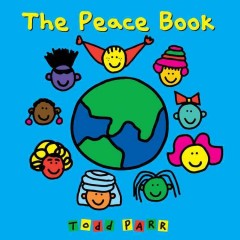 When it comes to books about peace, I make no distinction between books for adults, books for teens and books for children. Peace, as complex and elusive as it is for us adults, lends itself particularly well to the inspiring, simple and beautiful way many books for children are written. We “grown-ups” often even have trouble agreeing on a definition of peace. To solve that question, I will refer you to a book that I read regularly to my ten month old boys: The Peace Book by Todd Parr. Peace, Parr tells us, is not particularly complicated. It lies in making friends, helping your neighbor, sharing a meal (especially if it’s pizza), thinking about those you love and growing a garden.
When it comes to books about peace, I make no distinction between books for adults, books for teens and books for children. Peace, as complex and elusive as it is for us adults, lends itself particularly well to the inspiring, simple and beautiful way many books for children are written. We “grown-ups” often even have trouble agreeing on a definition of peace. To solve that question, I will refer you to a book that I read regularly to my ten month old boys: The Peace Book by Todd Parr. Peace, Parr tells us, is not particularly complicated. It lies in making friends, helping your neighbor, sharing a meal (especially if it’s pizza), thinking about those you love and growing a garden.
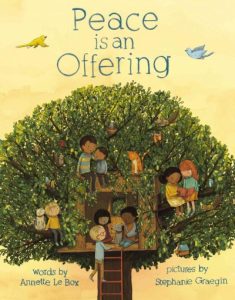 Also shelved in the children’s section but desperately needed by us adults are Peace is an Offering by Annette LeBox and The Forgiveness Garden by Lauren Thompson. Written after 9/11, the former is a poetic and visual reminder of the roots and value of peace. The later is the story of little children leading the way to peace by planting a garden (perhaps this is the type Todd Parr means) in their village that has been torn apart by violence and hatred.
Also shelved in the children’s section but desperately needed by us adults are Peace is an Offering by Annette LeBox and The Forgiveness Garden by Lauren Thompson. Written after 9/11, the former is a poetic and visual reminder of the roots and value of peace. The later is the story of little children leading the way to peace by planting a garden (perhaps this is the type Todd Parr means) in their village that has been torn apart by violence and hatred.
Working on Inner Peace
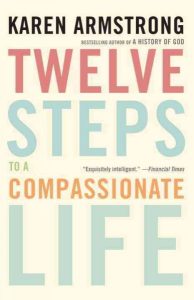 The Dalai Lama certainly has his share of insights into peace and he tells us “Peace in the world relies on individuals finding inner peace.” If you need a little help finding inner peace and translating it into outer peace, take a look at Twelve Steps to a Compassionate Life by Karen Armstrong. With detailed and practical steps outlined, such as learning about compassion, looking at your world, learning how to speak to others and so forth, Armstrong takes a big topic, learning how to be compassionate, and makes it seem manageable, if not easy (step twelve is loving your enemies).
The Dalai Lama certainly has his share of insights into peace and he tells us “Peace in the world relies on individuals finding inner peace.” If you need a little help finding inner peace and translating it into outer peace, take a look at Twelve Steps to a Compassionate Life by Karen Armstrong. With detailed and practical steps outlined, such as learning about compassion, looking at your world, learning how to speak to others and so forth, Armstrong takes a big topic, learning how to be compassionate, and makes it seem manageable, if not easy (step twelve is loving your enemies).
Heroes for Our Time
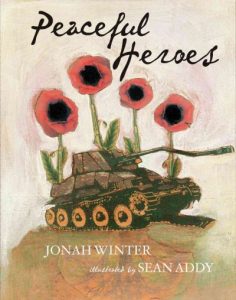 When you find yourself doubting the plausibility or effectiveness of making peace, you need to find some Peaceful Heroes to inspire you. Jonah Winter pays tribute to some of the greatest peace makers throughout history, including Jesus, Clara Barton, Corrie Ten Boom and Oscar Romero. For another collective biography of the icons of peace and a hopeful history of the nonviolent resistance movement in general, you may want to try After Gandhi: One Hundred Years of Nonviolent Resistance by Anne Sibley O’Brien.
When you find yourself doubting the plausibility or effectiveness of making peace, you need to find some Peaceful Heroes to inspire you. Jonah Winter pays tribute to some of the greatest peace makers throughout history, including Jesus, Clara Barton, Corrie Ten Boom and Oscar Romero. For another collective biography of the icons of peace and a hopeful history of the nonviolent resistance movement in general, you may want to try After Gandhi: One Hundred Years of Nonviolent Resistance by Anne Sibley O’Brien.
A fe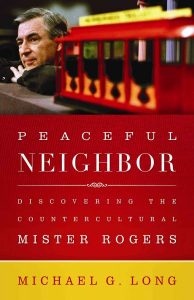 w of my personal peace heroes are also worth reading about. If you think the transcendent father of children’s television, Fred Rogers, just wore sweaters and sang cheesy songs about self-esteem, take a look at Michael Long’s biography Peaceful Neighbor. Long argues convincingly that our favorite television neighbor was actually a radical pacifist.
w of my personal peace heroes are also worth reading about. If you think the transcendent father of children’s television, Fred Rogers, just wore sweaters and sang cheesy songs about self-esteem, take a look at Michael Long’s biography Peaceful Neighbor. Long argues convincingly that our favorite television neighbor was actually a radical pacifist.
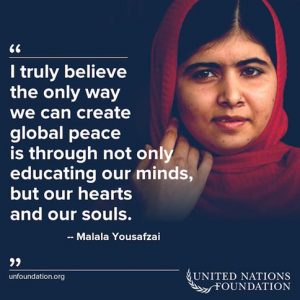 Speaking of people who are radically and bravely pursuing peace in the modern world, I would be beyond remiss if I did not mention the autobiography of the world’s youngest Noble Peace Laurette: Malala Yousafzai. I am Malala is yet another reminder that if a young person, after being shot by the Taliban for insisting on a girl’s right to education, has the courage to continue to work for peace in the world, we, as adults, have little excuse not to do our part.
Speaking of people who are radically and bravely pursuing peace in the modern world, I would be beyond remiss if I did not mention the autobiography of the world’s youngest Noble Peace Laurette: Malala Yousafzai. I am Malala is yet another reminder that if a young person, after being shot by the Taliban for insisting on a girl’s right to education, has the courage to continue to work for peace in the world, we, as adults, have little excuse not to do our part.
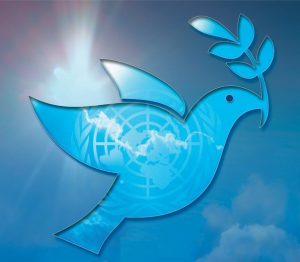 By and large the books I’ve discussed in this post are nonfiction. But perhaps one of the best ways we can promote peace on a daily basis is to read and share fictional works. It’s a scientifically proven fact that reading fiction builds empathy. If you consider that empathy is surely one of the crucial building blocks of peace, it should be concerning to you, as it is to me, that fewer American adults are reading literature. If we are ever to achieve the goals of the International Day of Peace, we must all become a little (or a lot) more empathetic. So, dear readers, whether or not you ever pick up one of the peace themed books I’ve highlighted today, I sincerely hope that you’ll continue to make literature part of your life. Read some bestselling fiction. Read popular books to your children and grandchildren. Give works of fiction to children, teens and adults as gifts. Perhaps best of all, read a novel about someone who is completely different from you in terms of race, religion, country of origin or socioeconomic status. And then tell a friend about it. Write down the title for them. Talk about the books that have inspired you and changed your perspective on the world. Do it today and tomorrow and forever. Do it for yourself; do it for the world; do it for peace.
By and large the books I’ve discussed in this post are nonfiction. But perhaps one of the best ways we can promote peace on a daily basis is to read and share fictional works. It’s a scientifically proven fact that reading fiction builds empathy. If you consider that empathy is surely one of the crucial building blocks of peace, it should be concerning to you, as it is to me, that fewer American adults are reading literature. If we are ever to achieve the goals of the International Day of Peace, we must all become a little (or a lot) more empathetic. So, dear readers, whether or not you ever pick up one of the peace themed books I’ve highlighted today, I sincerely hope that you’ll continue to make literature part of your life. Read some bestselling fiction. Read popular books to your children and grandchildren. Give works of fiction to children, teens and adults as gifts. Perhaps best of all, read a novel about someone who is completely different from you in terms of race, religion, country of origin or socioeconomic status. And then tell a friend about it. Write down the title for them. Talk about the books that have inspired you and changed your perspective on the world. Do it today and tomorrow and forever. Do it for yourself; do it for the world; do it for peace.
